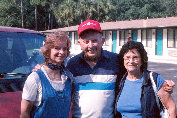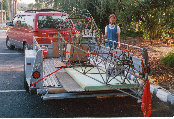
That was alright since I wanted to choose my own engine. I did a title search on N88037 and found the Cub had a variety of owners over the years. It did its share of training, but the highlight was its time as a banner towing plane with larger engine. Checking with the FAA, I found a report of the Cub crashing in 1995. The NTSB report stated that the aircraft crashed shortly after taking off from Rochester, Indiana. Winds were 15 knots gusting to 25 knots. NTSB stated the cause was inadequate speed at takeoff which resulted in a stall with wind conditions factoring in. The right wing was crushed and the propeller, fuselage, and engine mount bent, and the landing gear collapsed. The pilot sustained serious injuries. With so much of the plane damaged or destroyed, what was being advertised?
The Cub was advertised as having new wood spars. That bothered me since I thought that post-war models had changed to aluminum spars. I called the EAA and asked for someone who knew about Cubs. I talked to Norm Peterson, a legend in EAA and a long-time EAA employee. He is the acknowledged expert on J-3s. I told Norm that the bill of sale indicated that the J-3 rolled out of the factory on January 25, 1946, serial number 15654. Norm told me that the transition to aluminum spars happened late in 1946, and that my Cub came out of the Piper plant in Lockhaven, Pennsylvania, with wood spars. With that information in hand, I negotiated over the phone with the owner Jack Bills. Sue and I took a U-Haul trailer to Florida over the Fourth of July, 2000, to pick up our project. Jack is quite a character. In his 70’s at the time, Jack showed me photographs of his life
